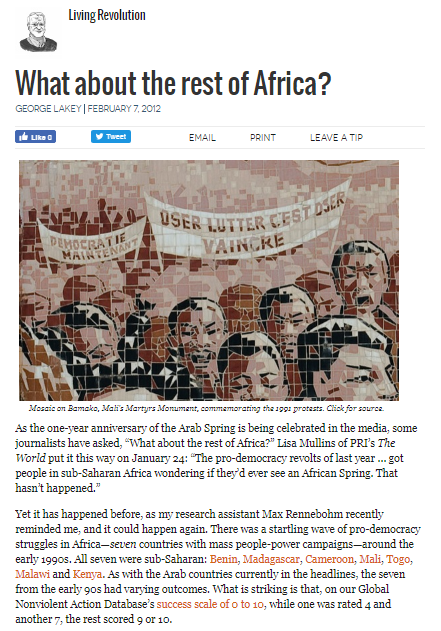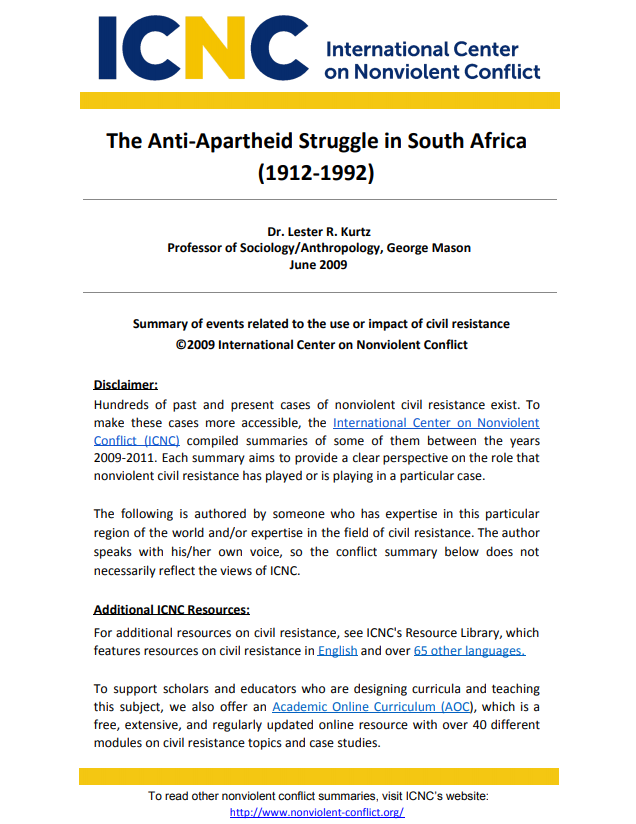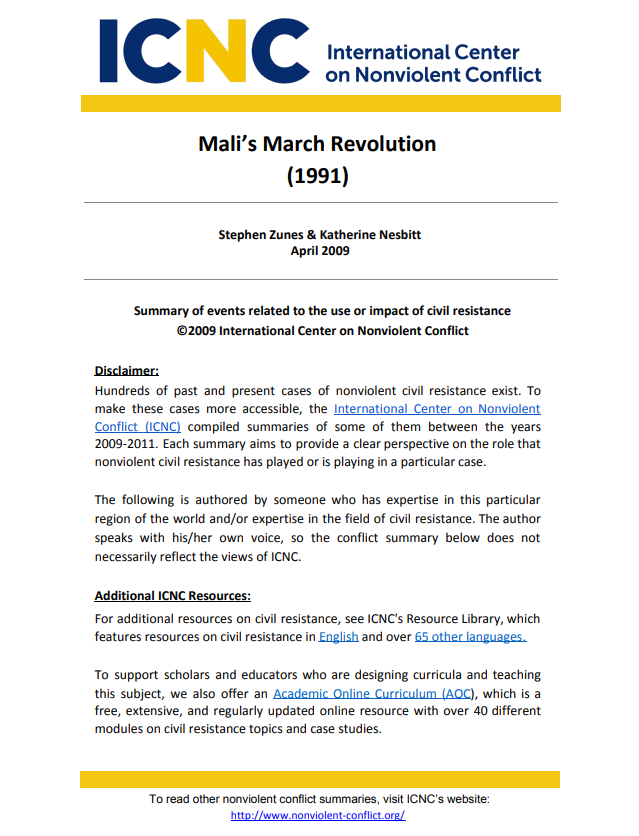
The Other African Spring: Seven Sub-Saharan Mass People-Power Movements of the 1990s
As the one-year anniversary of the Arab Spring is being celebrated in the media, some journalists have asked, “What about the rest of Africa?” Lisa Mullins of PRI’s The World put it this way on January 24: “The pro-democracy revolts of last year … got people in sub-Saharan Africa wondering if they’d ever see an African Spring. That hasn’t happened.”
Yet it has happened before, […] and it could happen again. There was a startling wave of pro-democracy struggles in Africa—seven countries with mass people-power campaigns—around the early 1990s. All seven were sub-Saharan: Benin, Madagascar, Cameroon, Mali, Togo, Malawi and Kenya. As with the Arab countries currently in the headlines, the seven from the early 90s had varying outcomes. What is striking is that, on our Global Nonviolent Action Database’s success scale of 0 to 10, while one was rated 4 and another 7, the rest scored 9 or 10.


